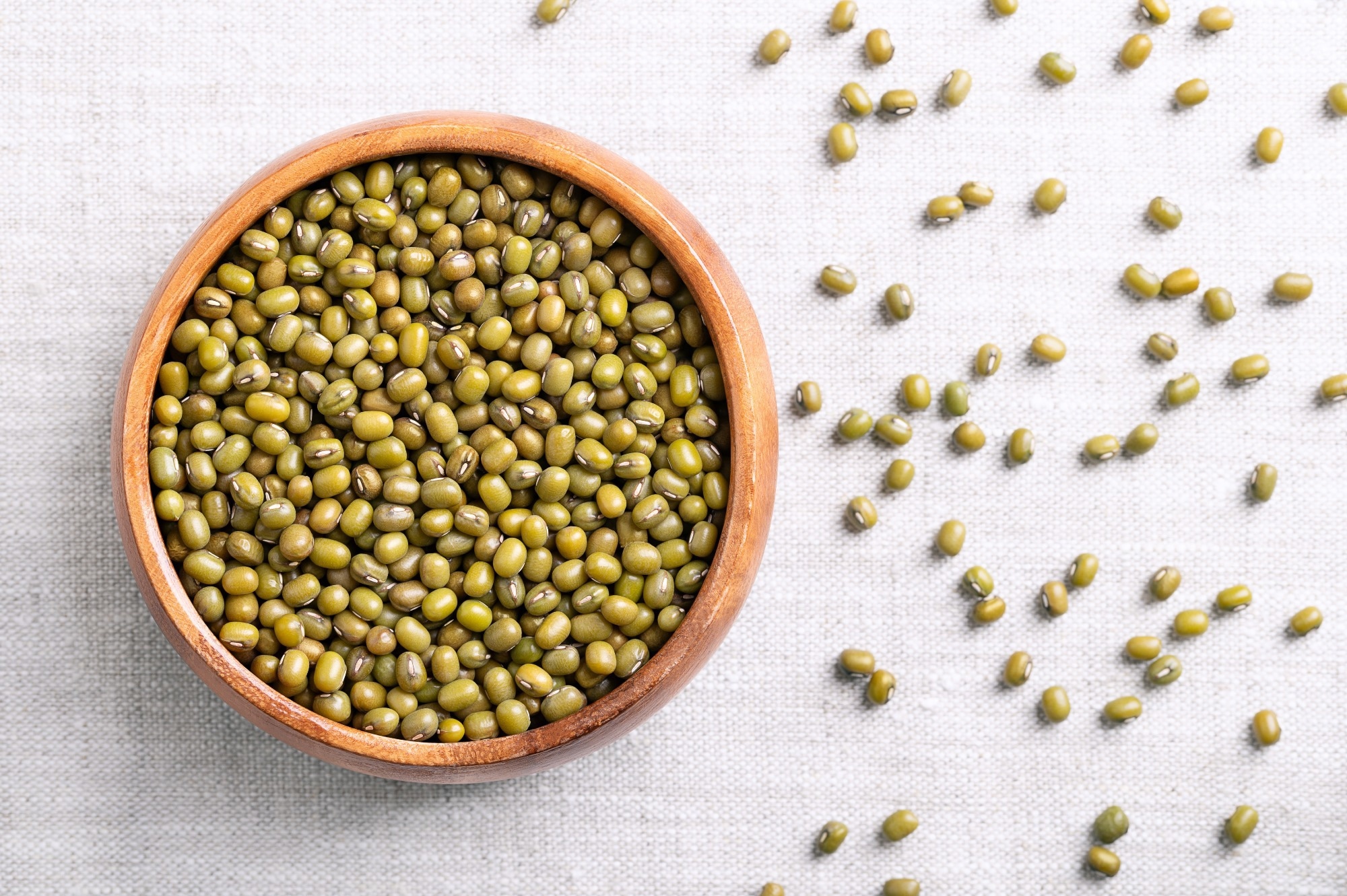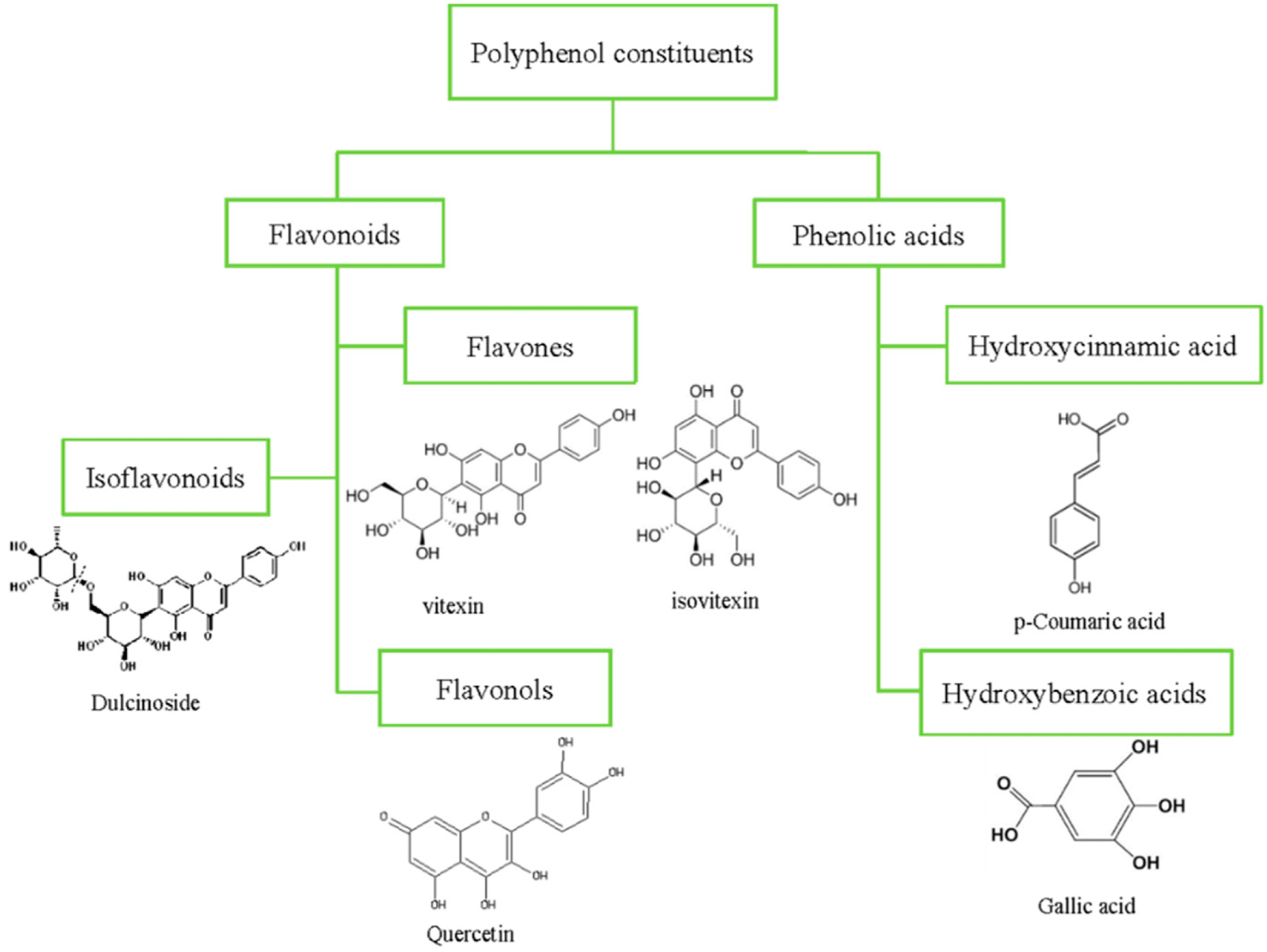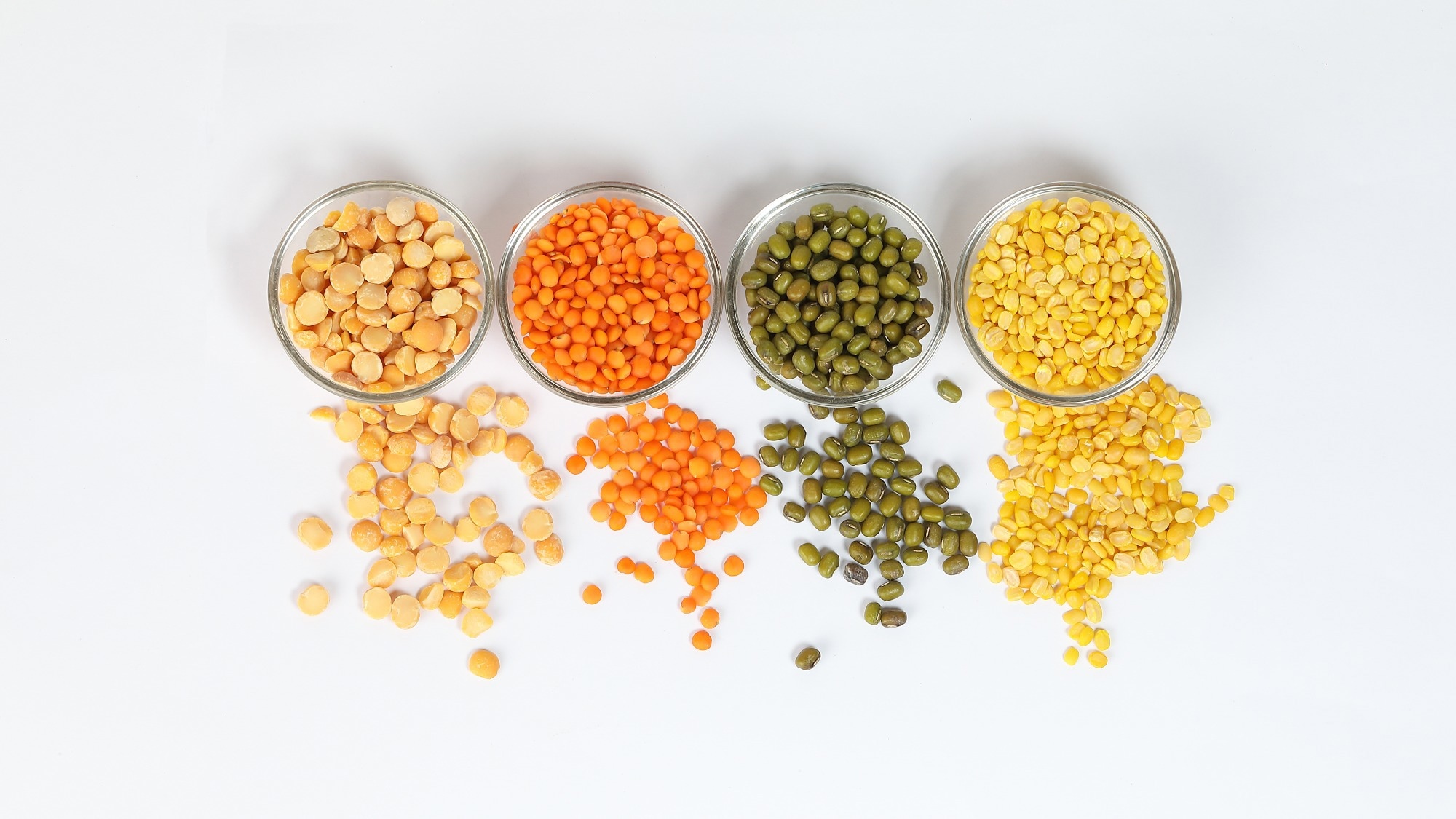Introduction
Botanical and nutritional profile
Digestive health and glycemic control
Cardiovascular benefits
Weight management and satiety
Other potential health benefits
Safety and consumption considerations
Conclusion
References
Further reading
Discover how mung beans bridge ancient remedies and modern science, offering affordable nutrition that supports blood sugar, heart health, and gut function, while remaining gentle on digestion and accessible across cultures.
 Image Credit: Peter Hermes Furian / Shutterstock.com
Image Credit: Peter Hermes Furian / Shutterstock.com
Introduction
Mung beans are a drought-tolerant pulse cultivated on over six million hectares throughout China, India, and other parts of Southeast Asia. Throughout these regions, mung beans are often served with rice or wheat to provide a source of affordable, digestible protein, minerals, and fiber.
In addition to its culinary role, classical pharmacopeias, such as the Chinese Compendium of Materia Medica, describe mung bean remedies for detoxification, heatstroke relief, and digestive upsets. Modern research has also led to the characterization of polyphenols, peptides, and polysaccharides that contribute to the antihyperglycemic, antihyperlipidemic, antihypertensive, and antioxidant properties of mung beans.
Botanical and nutritional profile
The dry mung bean seed supplies 21-32% high-digestibility protein, amylose-rich complex carbohydrates, and a dietary fiber serving of 16 g/100 g, thereby yielding a naturally low glycemic response. When consumed with cereal grains, the lysine-rich protein in mung beans enhances amino acid balance and digestibility in mixed diets.1
Whereas mung beans refer to the whole bean, moong beans refer to the de-husked and split version of whole mung beans. Mung beans are dense in micronutrients and are rich in B vitamins, including B-complex and folate, as well as iron, magnesium, and potassium to support oxygen transport, neuromuscular function, and electrolyte balance, respectively. Traditional processing methods, such as germination or fermentation, further enhance mineral bioavailability by degrading phytic acid, which would otherwise interfere with nutrient absorption.1
Mung bean seed concentrates contain numerous protective phytochemicals, including five flavonoid subclasses, with vitexin and isovitexin in the seed coat contributing to their antioxidant activity. Bound phenolic acids, including ferulic, caffeic, and p-coumaric, provide additional free-radical scavenging power and persist through digestion to amplify potential health benefits.1
 Chemical structures of the main polyphenol constituents in the mung bean.
Chemical structures of the main polyphenol constituents in the mung bean.
Digestive health and glycemic control
Mung beans provide both insoluble hemicellulose and fermentable oligosaccharides that hasten intestinal transit while feeding beneficial gut microbes. Colonic fermentation of these fibers releases short-chain fatty acids that stimulate peristalsis, reinforce mucosal integrity, mitigate low-grade inflammation, and induce glucagon-like peptide-1 (GLP-1) secretion, all of which foster a healthy microbiome and stabilize glucose metabolism.2
Starch granules within mung beans are tightly packed in a viscous fiber matrix, which reduces the glycemic index of cooked mung, thereby slowing gastric emptying and carbohydrate absorption. Soluble fractions prevent glucose entry into the bloodstream, whereas insoluble fiber within the hull increases satiety. The low glycemic index advantage of mung beans persists, regardless of whether they are eaten whole, sprouted, or milled into flour.
Previous population studies involving over 300,000 adults suggest that consuming at least 30 g of legumes daily reduces the risk of type 2 diabetes by 20-30%. Controlled feeding trials have similarly reported that diets enriched with fiber-dense pulses improve whole-body insulin sensitivity by about 25%, prevent protein-induced insulin resistance, and reduce fasting glucose by 8-12 mg/dL within eight weeks.2
Top 7 Beans and Legumes to Control Blood Sugar Levels in Diabetic Patients
Cardiovascular benefits
Habitual intake of mung beans reduces both total and low-density-lipoprotein cholesterol (LDL-C) while increasing high-density lipoprotein cholesterol (HDL-C) levels, thereby improving the atherogenic index. Bioactive peptides within mung bean protein have also been shown to inhibit angiotensin-converting enzyme (ACE) activity and enhance bile-acid excretion to sustain these effects.
In a six-week, randomized, double-blind trial, 27 healthy adults between 45 and 60 years of age consumed 10 or 15 g of mung bean protein daily. Both doses led to increased brachial-artery flow-mediated dilation, improved glutathione-peroxidase activity, and consistent malondialdehyde activity, all of which contribute to antioxidant defenses.
In this trial, levels of nuclear factor-κB, tumor necrosis factor-α (TNF-α), interleukin-6 (IL-6), nitrite, and nitrate declined, further confirming a robust anti-inflammatory shift. Combined with their cholesterol-lowering effects, these changes can prevent atherogenesis and protect endothelial function, thereby reducing the risk of future cardiovascular events.3
Weight management and satiety
Clinical data suggest a neutral to favorable effect of mung bean consumption on body mass. For example, in a six-week trial, study participants consuming 10 g of protein per day (MB10) lost 3.3 kg of body weight, whereas those consuming 15 g (MB15) did not experience any weight loss. These effects confirm that mung-bean protein did not promote weight gain.
Although satiety hormones were not directly measured, the protein-fiber matrix, low energy density, and absence of compensatory weight increase collectively indicate that mung bean-based beverages can aid weight-management programs. More specifically, the high protein content of mung beans provides satiating amino acids such as leucine and lysine, whereas the viscous bean fiber slows gastric emptying, both of which enhance satiety without increasing caloric intake.3
Other potential health benefits
Mung bean proteins, peptides, and polyphenols have been shown to inhibit the growth of Staphylococcus aureus, Salmonella typhimurium, and Fusarium species, as well as respiratory syncytial virus (RSV) infection, while supporting the activity of interferon-γ and TNF-α. Mung beans can also reduce macrophage nitric oxide, cyclo-oxygenase-2 (COX-2), and interleukin levels, all of which contribute to inflammation.
In traditional Chinese and Ayurvedic medicine, mung-bean poultices, teas, and seed pastes are often used for cleansing rituals, soothing heat rashes, cooling the body, and relieving acne, eczema, and pruritic dermatitis.4
Methanolic sprout fractions of mung beans have successfully inhibited the growth of human hepatocellular carcinoma (HepG2) and HeLa cervical cancer cells by upregulating tumor protein p53 (p53) and activating caspases. In rodents, diets enriched with bean fiber and resistant starch have been successfully used to reduce the development of colon adenocarcinoma.
These anti-cancer effects are attributed to vitexin, isovitexin, and protease inhibitors, as well as gut-derived butyrate, which scavenge radicals and block tumor signaling. Preliminary evidence supports future clinical trials to determine optimal human doses and long-term safety.4
 Image Credit: Oqbas / Shutterstock.com
Image Credit: Oqbas / Shutterstock.com
Safety and consumption considerations
Traditional diets throughout Asia often include 50-100 grams of cooked mung beans during each meal, with the beans consumed whole, sprouted, or ground into dal, noodles, and porridge.
Soaking overnight, then boiling until soft, or sprouting for two to three days and steaming are common household practices. These steps inactivate trypsin inhibitors, deactivate raffinose oligosaccharides that cause flatulence, and increase mineral uptake.
Germination also reduces phytic acid levels by approximately 76%, while increasing the bioavailability of iron and zinc by 3- and 2.4-fold, respectively. Fermentation or de-hulling provides similar health benefits.1
The storage proteins in mung beans are considered hypoallergenic, as this bean produces less intestinal gas than many other legumes. Nevertheless, individuals with legume hypersensitivity are advised to exercise caution while consuming this bean.1
Nutritionists consider mung beans to be a low-cost and high-quality weaning food, with their gentle fiber aiding digestion in older adults. Pregnant women can also obtain additional folate from non-heme iron from mung beans without excess calories. The soft texture of cooked mung beans is ideal for individuals with limited dentition and appetite issues.
Conclusions
Clinical and preclinical studies confirm the ability of mung beans to improve glycemic control, lipid profiles, endothelial reactivity, antioxidant defenses, immunity, and satiety while supplying high-quality protein, fermentable fiber, essential micronutrients, and bioactive phytochemicals. These benefits make this legume a cost-effective and nutrient-dense ingredient that can enhance diets and support public-health goals, ranging from reducing metabolic diseases to promoting healthy aging.
These benefits are based on observations obtained from small cohorts with studies spanning short durations. Therefore, extensive, long-term, and multicenter human trials are urgently needed to validate the durability and safety of mung beans across diverse populations.
References
- Hou, D., Yousaf, L., Xue, Y., Hu, J., Wu, J., Hu, X., ... & Shen, Q. (2019). Mung bean (Vigna radiata L.): Bioactive polyphenols, polysaccharides, peptides, and health benefits. Nutrients, 11(6), 1238. DOI: 10.3390/nu11061238, https://www.mdpi.com/2072-6643/11/6/1238
- Weickert, M. O., & Pfeiffer, A. F. (2018). Impact of dietary fiber consumption on insulin resistance and the prevention of type 2 diabetes. The Journal of nutrition, 148(1), 7-12. DOI: 10.1093/jn/nxx008, https://www.sciencedirect.com/science/article/pii/S0022316622108722?via%3Dihub
- Muchimapura, S., Thukhammee, W., Phuthong, S., Potue, P., Khamseekaew, J., Tong-Un, T., & Sangartit, W. (2024). Mung Bean Functional Protein Enhances Endothelial Function via Antioxidant Activity and Inflammation Modulation in Middle-Aged Adults: A Randomized Double-Blind Trial. Foods, 13(21), 3427. DOI: 10.3390/foods13213427, https://www.mdpi.com/2304-8158/13/21/3427
- Ganesan, K., & Xu, B. (2018). A critical review on phytochemical profile and health promoting effects of mung bean (Vigna radiata). Food Science and Human Wellness, 7(1), 11-33. DOI: 10.1016/j.fshw.2017.11.002, https://www.sciencedirect.com/science/article/pii/S2213453017301453?via%3Dihub
Further Reading
Last Updated: Jul 9, 2025